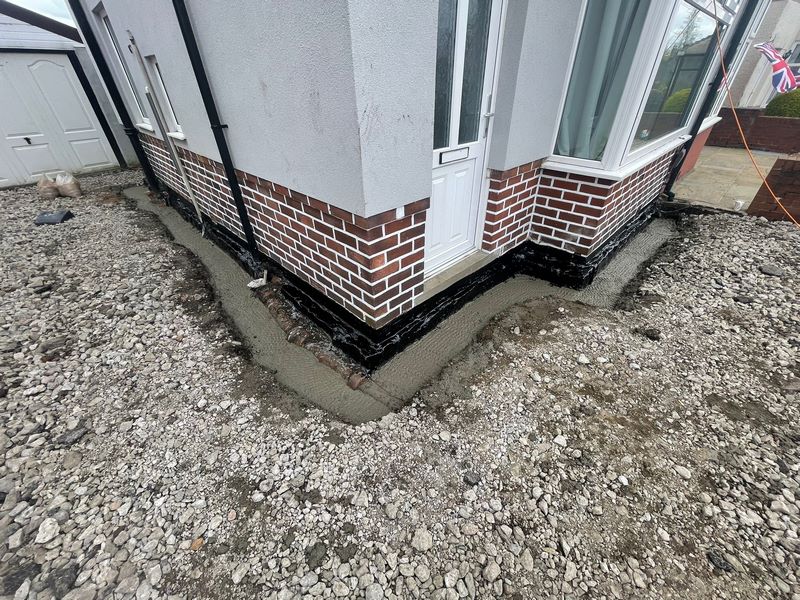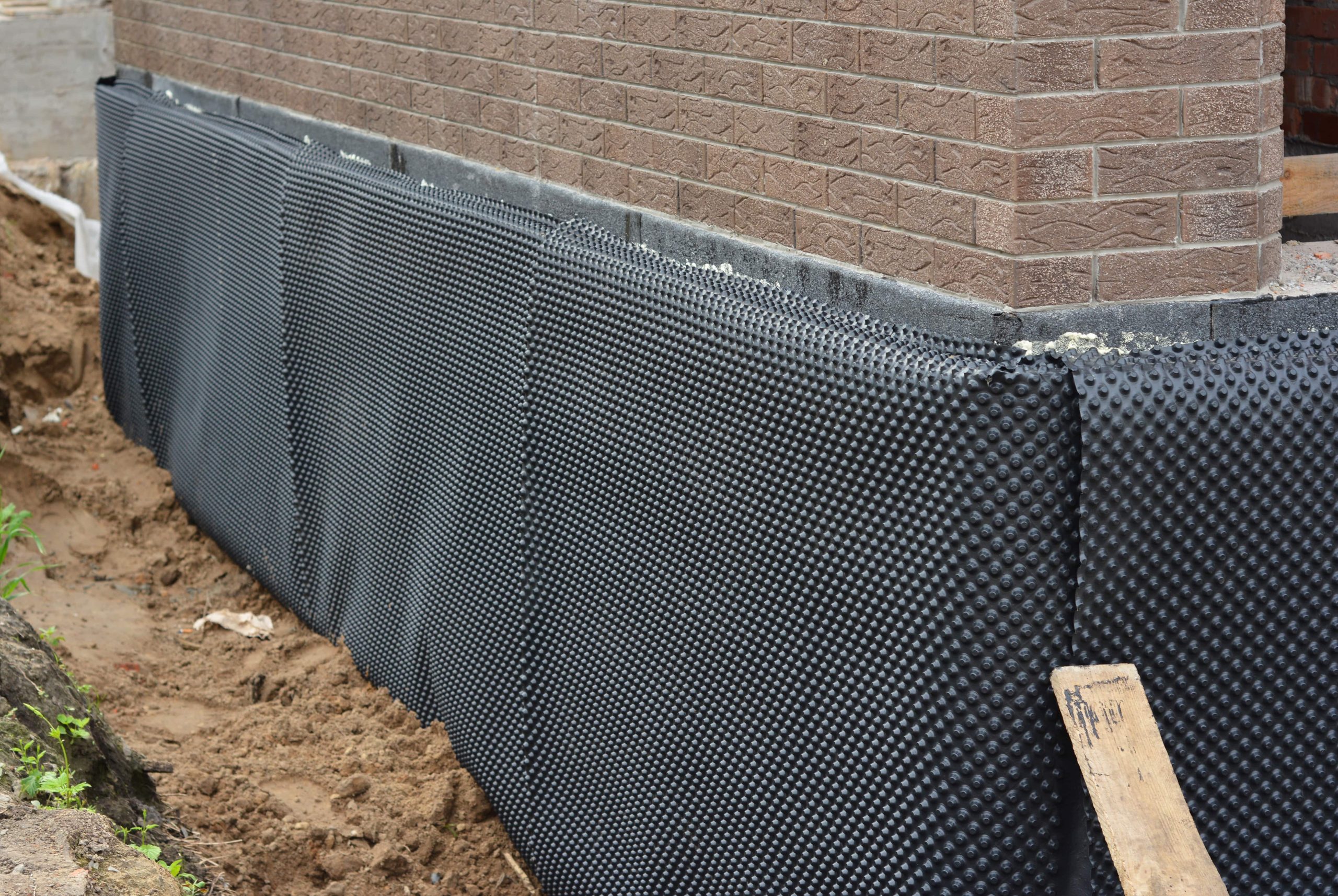Discovering the Numerous Techniques and Solutions for Effective Damp Proofing
Moisture in buildings poses considerable obstacles to both structural stability and interior air quality. Numerous techniques and remedies have actually emerged to fight this pervasive issue. From typical damp-proof membranes to ingenious chemical treatments, each approach provides one-of-a-kind advantages. Recognizing these choices is crucial for effective wetness control. Selecting the ideal option depends on certain structure problems and requirements, prompting more expedition into the most efficient wet proofing techniques readily available.
Understanding the Causes of Dampness
Wetness can develop from numerous resources, comprehending these causes is crucial for reliable removal. Generally, wetness originates from three primary sources: climbing damp, passing through damp, and condensation. Climbing damp occurs when groundwater travels up-wards with permeable materials, such as brick or rock, commonly due to a lack of an efficient obstacle (damp removal newcastle). Permeating moist is commonly triggered by exterior elements, including roof covering leaks, faulty rain gutters, or damaged walls, permitting water to penetrate a property. Condensation, on the other hand, arises from excess wetness in the air, commonly worsened by inadequate ventilation and temperature differences, leading to water droplets basing on surfaces. Identifying these underlying issues is essential, as each sort of moisture needs a tailored technique for remediation. Appropriate evaluation assists in determining one of the most reliable services, inevitably securing the architectural integrity of a building and enhancing indoor air quality
Conventional Damp-Proof Membrane Layers

Chemical Damp-Proofing Solutions
Chemical damp-proofing services provide an innovative method to stop wetness breach in buildings. These methods normally involve the application of fluid chemicals that penetrate masonry and develop an obstacle against increasing wet. Generally utilized chemicals include silanes, siloxanes, and various other water-repellent agents that react with surface area products to produce a hydrophobic layer.The application process normally requires drilling openings into the walls, infusing the chemical option, and enabling it to heal. This approach is specifically helpful for older frameworks where conventional damp-proof membranes may be not practical. Moreover, chemical damp-proofing can be much less turbulent and a lot more cost-effective than extensive improvement projects.While efficient, these options rely on appropriate application and environmental problems for peak efficiency. Regular maintenance and surveillance are vital to ensure the long life of the damp-proofing treatment. Overall, chemical damp-proofing represents a functional choice for safeguarding structures versus moisture-related damages
Dental Caries Wall Surface Building And Construction Techniques
Cavity wall surface building and construction techniques offer numerous benefits, particularly in dampness control and energy performance. By integrating an air space between 2 layers of stonework, these wall surfaces properly reduce water ingress while boosting insulation. This combination not just safeguards structures from wetness however additionally contributes to minimized power usage.
Advantages of Cavity Walls
When thinking about effective wet proofing methods, the advantages of dental caries wall surfaces stand out prominently. Tooth cavity wall surfaces contain 2 separate layers, producing an air void that effectively lowers dampness infiltration. This layout reduces the threat of wetness, as the outer wall acts as an obstacle against rainfall and water ingress. In addition, cavity walls boost thermal insulation, which adds to energy efficiency by minimizing warmth loss. They additionally offer audio insulation, aiding to develop a quieter indoor setting. The air gap enables for air flow, which helps in wetness control and minimizes the likelihood of mold growth. These benefits not only boost the total comfort of a building but likewise add to its long life and architectural stability.
Dampness Control Approaches
Efficient dampness control methods are vital in tooth cavity wall surface building and construction to ensure long-term defense versus wetness. One main technique involves the consolidation of weep openings, which help with water drain from the cavity, protecting against buildup. Furthermore, using breathable membranes can assist manage wetness degrees while enabling entraped vapor to get away. Correct placement of insulation is additionally crucial, as it should not obstruct water drainage courses. Additionally, guaranteeing that the external leaves of the cavity wall surface are constructed with waterproof materials improves overall durability. Routine maintenance checks are crucial to identify any clogs or damage early, guarding the framework's stability. Inevitably, a combination of these methods develops a robust protection against moisture invasion in cavity wall surfaces.
Insulation and Energy Efficiency
Insulation plays a vital duty in improving power effectiveness within dental caries wall building and construction. By integrating protecting products, these walls create a thermal barrier that lessens heat loss and decreases energy consumption. Efficient insulation not only assists preserve a stable interior temperature level but likewise mitigates the threat of dampness, as it prevents condensation within the wall cavity. Various strategies, such as making use of stiff foam boards or mineral woollen, can be employed to accomplish excellent insulation performance. Additionally, appropriate setup is vital to ensure that spaces and spaces are lessened, which can or else compromise energy effectiveness. Ultimately, a well-insulated dental caries wall contributes considerably to overall sustainability and lowers heating and air conditioning costs for house owners.
Outside Damp Proofing Approaches
Exterior moist proofing techniques are necessary for safeguarding frameworks from wetness seepage. 2 reliable methods consist of the application of waterproof membrane layers and the installation of French drains pipes. These solutions aid alleviate water accumulation and preserve the integrity of structures.
Waterproof Membrane Layer Application
While different techniques exist for avoiding wetness access, the application of waterproof membrane layers continues to be a highly efficient external damp proofing technique. These membrane layers are usually made from materials such as polyethylene, rubber, or modified bitumen, supplying a durable barrier against water penetration. The setup procedure involves applying the membrane layer to the external surface areas of structures or wall surfaces, ensuring total insurance coverage to avoid leakages. Appropriate bond and securing at joints are critical to making the most of effectiveness. Water-proof membranes can be used in numerous forms, consisting of fluid finishes and sheet membranes, permitting flexibility based upon the specific demands of the framework. This approach not only safeguards buildings from moisture but additionally enhances their longevity and architectural integrity.
French Drainpipe Installation
One reliable approach for managing groundwater and stopping dampness build-up around a structure's structure is the installation of a French drain. This drain system includes a trench filled up with crushed rock and a perforated pipeline that redirects surface water away from the foundation. Correct installment needs mindful preparation, making certain that the drain slopes far from the structure to help with perfect water flow. Additionally, the location of the drainpipe is vital; it should be positioned in locations prone to merging or excess dampness. Routine upkeep, consisting of clearing particles from the crushed rock and making certain the pipeline continues to be unobstructed, is crucial for long-lasting efficiency. Eventually, a well-installed French drain can significantly reduce the threat of here water-related problems in foundations and cellars.
Interior Waterproofing Approaches
Interior waterproofing strategies are important for securing a building's inside from moisture seepage and prospective water damage. These strategies usually entail the application of specific products and methods made to produce a wetness obstacle within the structure. One usual method is the usage of waterproof finishings or sealants on wall surfaces and floorings, which stop wetness from passing through surfaces.Additionally, mounting indoor water drainage systems, such as sump pumps, can successfully handle water buildup in basements and crawl areas. An additional method involves making use of vapor barriers, which are set up to inhibit dampness motion from the ground into living spaces.Moreover, resolving any cracks or spaces in walls or foundations with ideal sealers guarantees a comprehensive defense against water intrusion. By carrying out these interior waterproofing strategies, residential property proprietors can greatly decrease the risk of mold and mildew development, architectural damage, and other moisture-related concerns. Correct implementation of these strategies is important for long-term protection and structure stability.
Regular Maintenance and Examination Practices
Routine upkeep and evaluation methods are important for ensuring the long-lasting efficiency of moist proofing services in any building. Regular checks make it possible for homeowner to identify early indicators of wetness intrusion, such as peeling off paint, mold growth, and stuffy odors. These indications can signal underlying concerns that require immediate attention.Inspections should be carried out at least each year, concentrating on at risk locations like cellars, creep rooms, and exterior wall surfaces. Throughout these assessments, home proprietors must take a look at sealers, drain systems, and air flow to validate they work correctly.Additionally, preserving seamless gutters and downspouts is vital, as clogged systems can bring about water buildup near the structure. Carrying out a normal maintenance schedule, together with prompt repair work, can significantly prolong the life expectancy of damp proofing measures and safeguard the structural honesty of the structure. Aggressive actions inevitably contribute to the total health and wellness of the living environment.
Frequently Asked Concerns
For How Long Does Damp Proofing Commonly Last?
The duration of moist proofing performance differs, generally lasting in between 20 to 50 years. Aspects such as application high quality, environmental problems, and maintenance practices substantially affect the long life of the damp proofing treatment.

Can I Damp Evidence My Home Myself?
The private considered the feasibility of DIY damp proofing. With proper research study and the ideal materials, it is feasible. They likewise acknowledged the relevance of professional guidance to assure durable performance and protect against future concerns.
What Are the Signs of Inefficient Damp Proofing?
Indications of inefficient wet proofing include persistent stuffy odors, noticeable mold and mildew development, peeling off paint, moist spots on wall surfaces, and wood degeneration - damp proofing newcastle. Home owners should attend to these concerns promptly to avoid further damages and health worries
Does Damp Proofing Affect Indoor Air Quality?

How Much Does Expert Damp Proofing Price?
Professional damp proofing costs vary substantially, commonly varying from $1,000 to $5,000 depending upon the building's size, the level of the damp problem, and chosen methods. Each scenario requires a customized analysis for accurate rates. Commonly, wetness stems from 3 main sources: increasing damp, passing through wet, and condensation. When taking into consideration reliable wet proofing techniques, the benefits of cavity walls stand out prominently. Outside moist proofing techniques are crucial for protecting structures from wetness seepage. While numerous techniques exist for avoiding wetness access, the application of water-proof membrane layers continues to be an extremely efficient external wet proofing strategy. Indications of inefficient damp proofing consist of consistent stuffy odors, noticeable mold and mildew development, peeling paint, moist patches on wall surfaces, and wood degeneration.